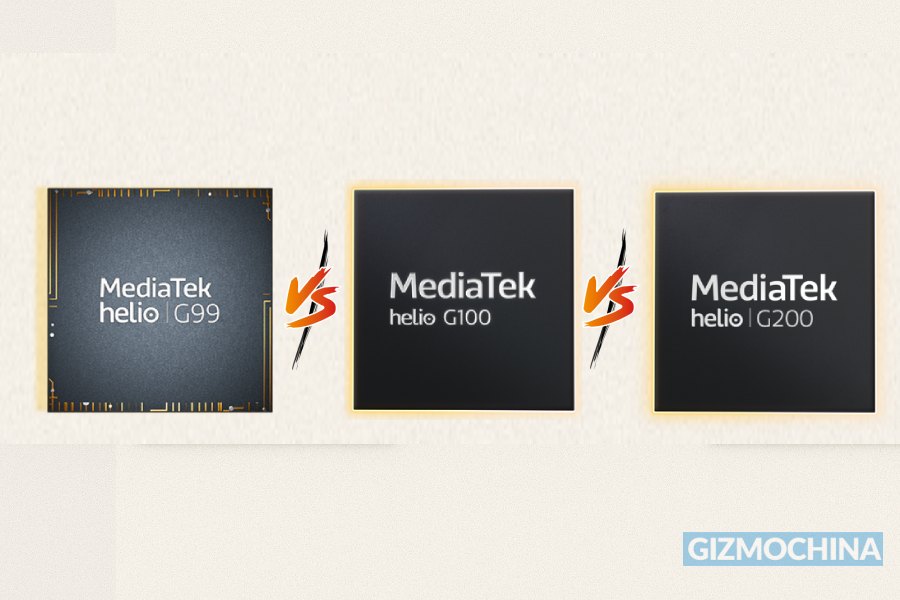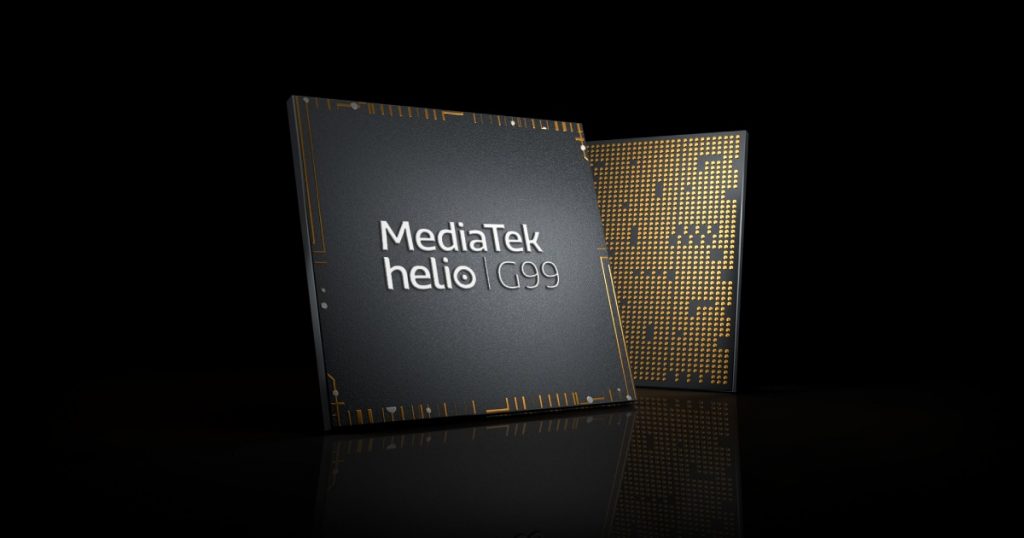
MediaTek’s Helio G is a smartphone chipset series that powers many budget Android phones. And recently, we got a new entrant in the lineup, the Helio G200.
As you’d naturally expect, the new chip should be noticeably more advanced than its predecessor. Unfortunately, the changes in this generation are hardly worth noting. In fact, the differences across the last three generations of G-series chips—Helio G99, G100, and G200—have been… restrained.

At a glance, all three chips share a nearly identical spec sheet: 4G-only modems, octa-core CPUs, Mali-G57 GPUs, and support for high refresh rate 120Hz displays. And since the core architecture remains the same, there’s no significant performance leap from one generation to the next. Let’s break it down in detail below.
Helio G99
When MediaTek introduced the Helio G99, it framed the chip as a meaningful upgrade for 4G devices. That was in a market already leaning heavily into 5G, but MediaTek still saw an opportunity.
The G99 brought some useful improvements over its predecessor, like support for 108MP cameras, high refresh rate displays up to 120Hz, and what MediaTek calls “Intelligent Display Sync” to dynamically control refresh rates for power efficiency.

Its CPU design was also practical for the time: two Arm Cortex-A76 cores at 2.2GHz and six Cortex-A55 efficiency cores. Paired with LPDDR4X RAM support and UFS 2.2 storage, the G99 performed well for its class. It also shipped with MediaTek’s HyperEngine 2.0 Lite, which optimized CPU, GPU, and memory usage in gaming scenarios. But this was more an act of rebranding existing efficiencies than a leap forward in gaming tech.
Networking was also stuck in 4G territory, with dual 4G VoLTE and Cat-13 LTE. While decent for regions with limited 5G rollout, it didn’t feel future-proof. Still, G99 was stable, efficient, and affordable, the sort of chip that made sense in a $150 to $200 phone.
Helio G100
With the G100, MediaTek stuck to the same architecture. Identical CPU configuration, same Mali-G57 GPU, same memory and storage support. In fact, most of the internal specs are a copy-paste from the G99.
The biggest change, at least on paper, came from a switch to TSMC’s 6nm process. That move alone gave MediaTek a talking point in the form of better power efficiency. And it surely makes a difference.

Elsewhere, the G100’s main upgrade came via the camera pipeline. The maximum sensor resolution jumped to 200MP, though manufacturers hardly took advantage of it. The chip retained a 3X ISP and support for ZSL (Zero Shutter Lag) dual-camera setups, plus the same bokeh, EIS, and AI processing features as the G99.
It also has HyperEngine gaming support, which is again a continuation of the same features. Dynamic antenna switching, call/data concurrency, and CPU-GPU-memory balancing were also carried forward. In essence, the G100 was a G99 on a more efficient process node, with better camera support baked in.
Helio G200
That brings us to the latest member of the lineup: Helio G200. At first glance, nothing really jumps out. The CPU layout is still two Cortex-A76 and six Cortex-A55, and the clock speed remains identical at 2.2GHz and 2.0GHz, respectively.
There’s no change in terms of RAM and storage as well. And even the 2520×1080 resolution cap and 120Hz display support stay exactly where they were.

MediaTek is making a talking point through incremental tuning and GPU overclocking. The Mali-G57 GPU here now runs up to 1.1GHz, and the company is quoting 75% faster GPU performance over some “competitor platforms” and a 50% increase in app launch speed for social apps.
There’s also a new 12-bit DCG (dual conversion gain) pipeline for better HDR video capture, and continued 200MP camera support.
Moreover, MediaTek claims up to 30% better power efficiency in gaming, thanks to HyperEngine refinements and continued use of the 6nm process. One of the few new additions is 4G DC SAR technology that should improve connectivity in fringe areas and reduce latency during social and messaging app usage.
But these changes don’t fundamentally alter the nature of the chip. At its core, the G200 remains a 4G-only chipset with largely unchanged hardware. It’s a third iteration on the same idea, just a little more refined.
Three Generations, One Blueprint
Stacked side-by-side, the Helio G99, G100, and G200 could easily be mistaken for the same chip. All share the same CPU architecture, same memory and storage capabilities, same networking features, and nearly identical display and camera pipelines. The differences mostly lie in secondary optimizations:
| Feature | G99 | G100 | G200 |
| CPU | 2x Cortex-A76 + 6x A55 | Same | Same |
| GPU | Mali-G57 MC2 | Same | Same (up to 1.1GHz) |
| Camera Max | 108MP | 200MP | 200MP, 12-bit DCG |
| Process Node | Unknown (likely 12nm) | 6nm | 6nm |
| Storage | UFS 2.2 | Same | Same |
| Max Display | 2520×1080 @ 120Hz | Same | Same |
| Special Features | HyperEngine 2.0 Lite | HyperEngine, Elevator Mode | DC SAR, enhanced HDR video |
So what exactly is evolving? Technically, the GPU has been tuned, the camera ISP supports higher bit depth, and the networking stack is a bit more intelligent in fringe coverage areas. But the performance ceiling is still largely dictated by the same aging CPU layout. The Cortex-A76, first launched in 2018, is nearing seven years of service. It was a solid core in its day, but in 2025, it’s mostly cruising on nostalgia.
What’s missing?
One conspicuous omission across all three chips is 5G, and it’s a major one. It was understandable for the Helio G99 to support only 4G. But now that 5G has gained significant traction in countries like India, where the Helio G-series powers many phones, MediaTek really should have upgraded the network support in this generation.
The company could also have refreshed its core architecture by adopting a more recent ARM design like the Cortex-A78. It would offer better performance, which aligns better with current user demands and the increasingly power-hungry nature of apps in 2025. But the improvements we’re seeing in the Helio G series seem more about keeping pace than setting it.
For more daily updates, please visit our News Section.
Stay ahead in tech! Join our Telegram community and sign up for our daily newsletter of top stories! 
The post Three generations, one blueprint: MediaTek Helio G99 vs G100 vs G200 appeared first on Gizmochina.








